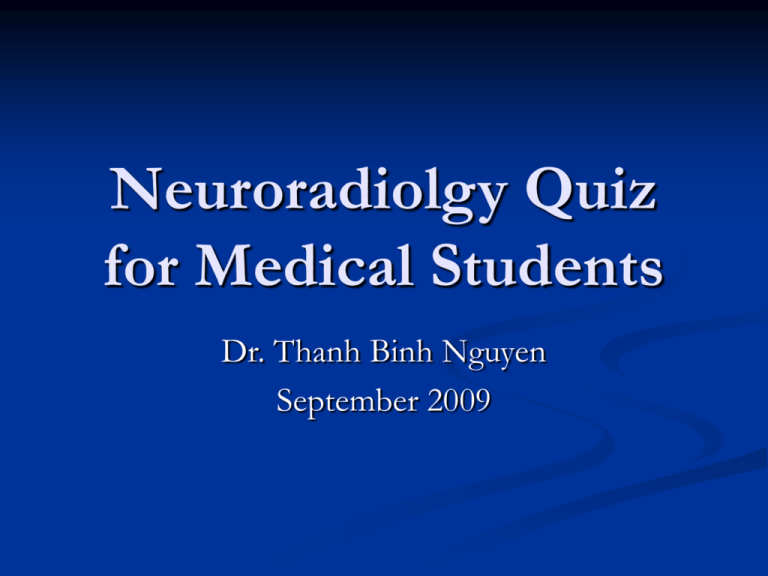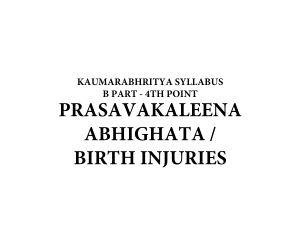DI-Neuroradiology quiz for med student 2009 (TN)
advertisement

Neuroradiolgy Quiz for Medical Students Dr. Thanh Binh Nguyen September 2009 Some of the pictures are from the PBL sessions in the neuroscience block. Go through the cases on your own and write it on a piece of paper. The answers will be at the end. Case 1 a) Describe the findings b) What is the most likely diagnosis? Axial T2-weighted images Axial T1-weighted images Sagittal proton dense images T2-weighted images Sag T1-weighted images Case 2 a) Identify the anatomical structures. 1 Artère vertébrale 2 3 4 Case 2 b) 6 7 8 9 10 5 4 3 2 1 Case 3 a) what is the finding? b) what is the differential diagnosis? Case 4 a) Describe the finding b) Give a list of 3 diseases which can present as such. Case 5 a) what is the finding? b) Give 2 diagnoses which can present as such Case 6 Give the diagnosis in a) and b) a) b) ANSWERS Case 1 a) Describe the findings b) What is the most likely diagnosis? Axial T2 MR images show multiple hyperintense T2 lesions in the periventricular white matter (long arrow) and in the corpus callosum (short arrow) Most likely dx is multiple sclerosis. Case 2 a) Identify the anatomical structures. 1 Artère vertébrale 2 3 4 1. 2. 3. 4. Ventral ramus (sensory) Vertebral artery Lamina Neural foramen Case 2 b) 6 7 8 9 10 5 4 3 2 1 1. 2. 3. 4. 5. 6. 7. 8. 9. 10. Pons Basilar artery Mammillary body Pituitary gland Optic chiasm Cingulate gyrus Corpus callosum Fornix Thalamus (massa intermedia) Aqueduct of Sylvius Case 3 a) what is the finding? b) what is the differential diagnosis? Hyperintense T2 lesion in the right temporal lobe The differential diagnosis would include an infarct, neoplasm (glioma) and herpes encephalitis. In patient with suspected herpes encephalitis, an urgent MR is indicated (after the patient has been placed on intravenous antiviral therapy) Case 4 a) Describe the finding b) Give a list of 3 diseases which can present as such. There is a left frontoparietal hemorrhage Common causes of intraparenchymal hemorrhage include vascular malformations (arteriovenous malformations, cavernomas), neoplasms, amyloid angiopathy. Case 5 a) what is the finding? b) Give 2 diagnoses which can present as such There is subarachnoid hemorrhage in the basal cisterns. The two most common causes of SAH are ruptured aneurysm and trauma. Case 6 Give the diagnosis in a) and b) a) b) On picture a) there is a right crescentic hyperdense collection in keeping with an acute subdural hematoma. It is causing subfalcine herniaton On picture b) there is a lentiform collection in the left frontal lobe in keeping with an epidural hematoma. There is hemorrhagic contusion also in the left parietal lobe.









